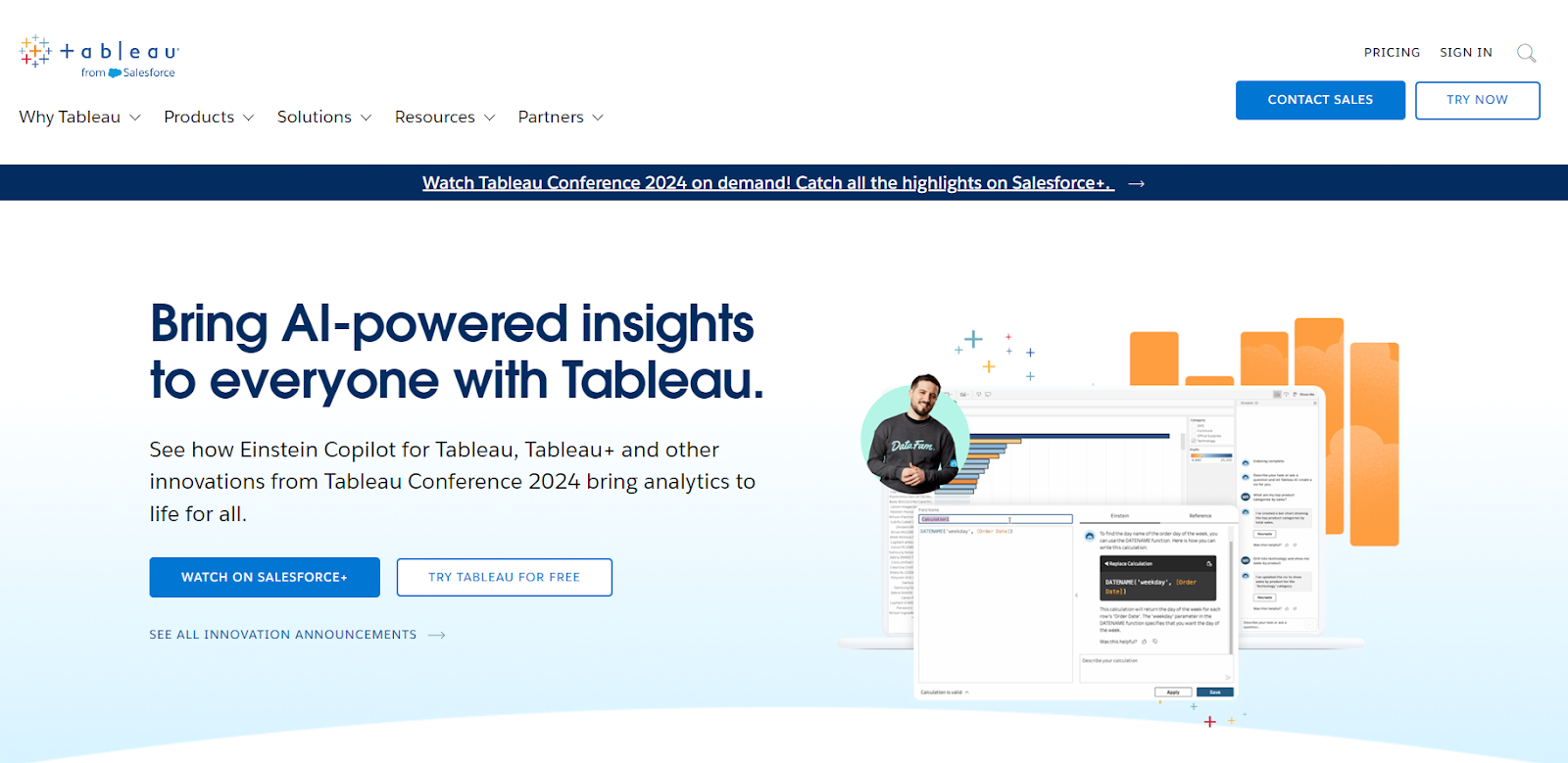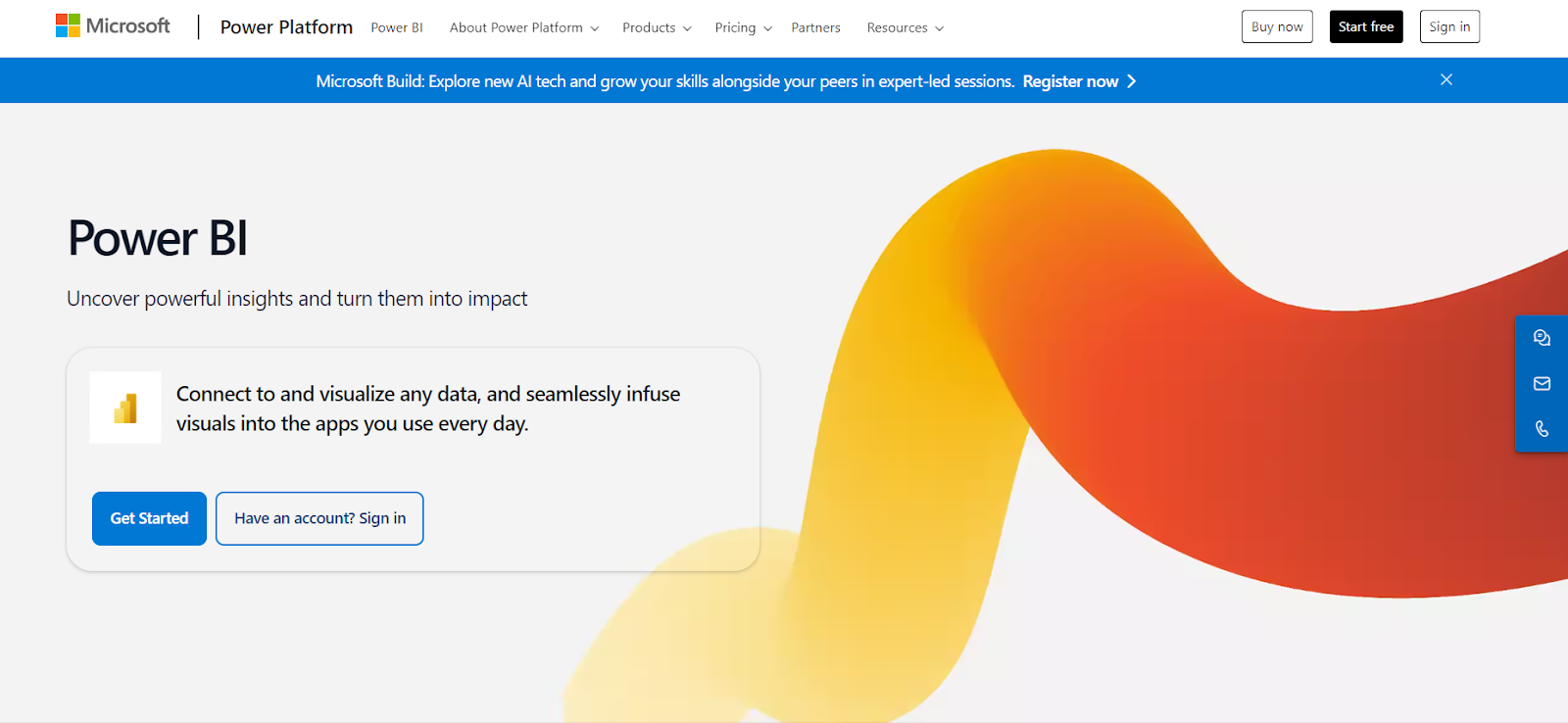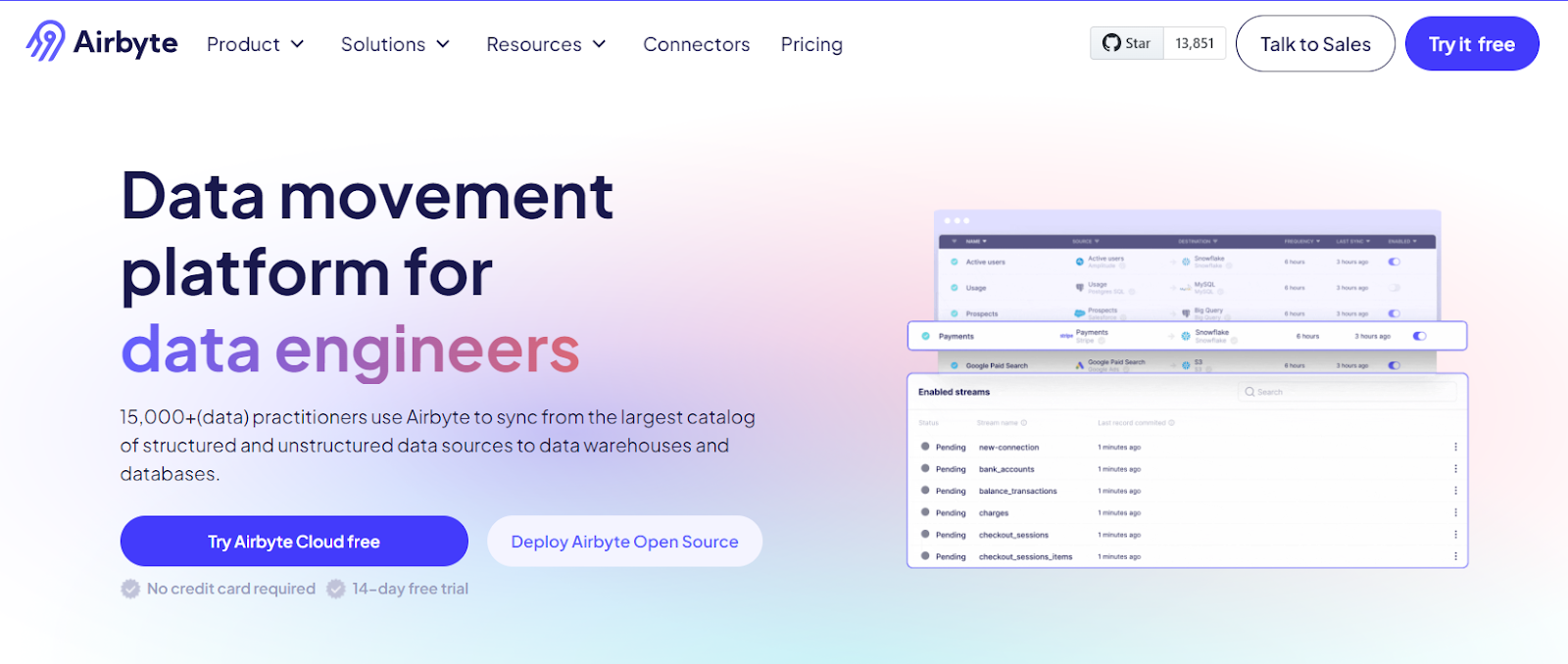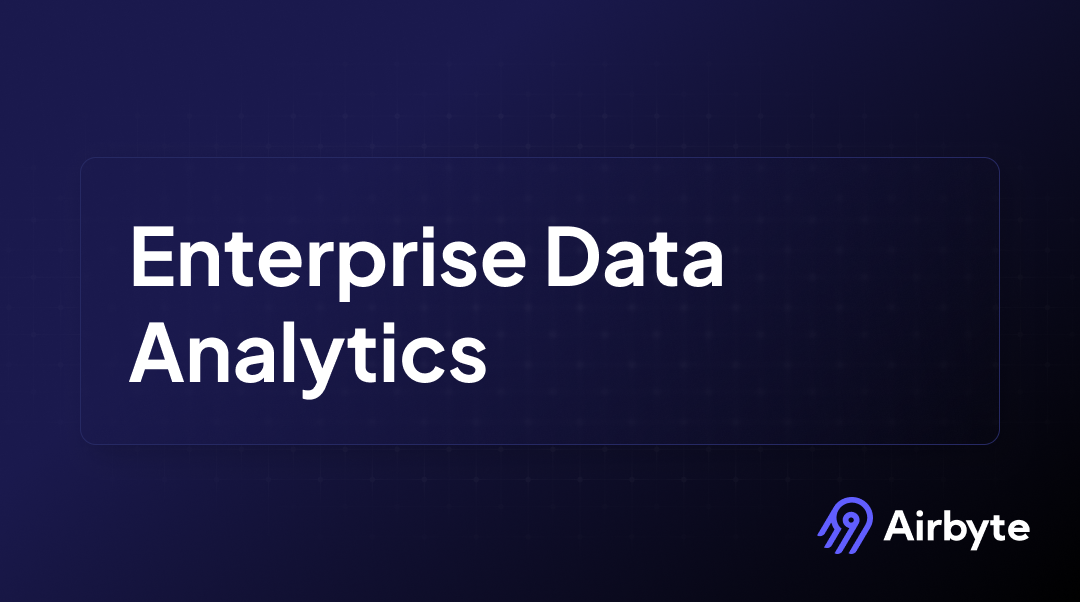What is Enterprise Data Analytics?
Summarize this article with:
✨ AI Generated Summary
Enterprise data analytics has evolved into a real-time, AI-driven ecosystem that integrates diverse data sources to enhance decision-making, operational efficiency, and customer understanding. Key advancements include:
- Four main analytics types: descriptive, diagnostic, predictive, and prescriptive, enabling deeper insights and automated decision support.
- Emerging trends like AI integration, real-time streaming, edge analytics, and democratized no-code platforms improving accessibility and responsiveness.
- Modern architectures such as data mesh, data fabric, multi-cloud, and lakehouse enhancing scalability, governance, and agility.
- Use cases span manufacturing, finance, healthcare, and logistics, delivering predictive maintenance, fraud detection, personalized care, and optimized routing.
- Platforms like Tableau, Power BI, Zoho Analytics, and Airbyte facilitate seamless data integration, visualization, and advanced analytics with enterprise-grade security and scalability.
Enterprise data analytics has evolved far beyond traditional reporting dashboards into a dynamic ecosystem powering real-time decision intelligence. Modern enterprises process over 2.5 quintillion bytes of data daily, yet struggle to transform this information deluge into competitive advantage. The challenge isn't data scarcity but rather the complexity of integrating diverse sources, ensuring quality, and delivering insights at the speed of business. Organizations that master this integration achieve measurable transformation: improved operational efficiency, enhanced customer understanding, and strategic agility that distinguishes market leaders from followers.
This comprehensive guide explores enterprise data analytics fundamentals, emerging technological trends, architectural innovations, and practical implementation strategies. You'll discover how modern approaches like data mesh architectures, AI-driven automation, and real-time processing capabilities are reshaping analytical landscapes while learning to leverage these advances for sustainable competitive advantage.
What Is Enterprise Data Analytics?
The process of gathering, evaluating, and analyzing massive data sets to gain insights and make more informed business choices is known as enterprise data analytics. It employs a variety of methods, including correlations, data mining, predictive analytics, data discovery, visualization, and more.
By compiling and analyzing data from diverse sources, you can reveal opportunities and identify potential risks. For instance, you can leverage enterprise data analytics in the marketing industry to gain insights into consumer behavior, preferences, and market trends. Having a clear picture of your data will help you segment customers into different categories, create customized campaigns, and deliver personalized services.
Modern enterprise data analytics extends beyond retrospective analysis to encompass prescriptive intelligence, where AI-powered systems recommend specific actions based on predictive models. This evolution transforms analytics from passive reporting tools into active decision-support systems that continuously optimize business operations through automated insights and recommendations.
What Are the Four Key Types of Enterprise Data Analytics?

There are four major types of enterprise data analysis methods based on their functionality:
Descriptive Analysis
Descriptive analysis focuses on analyzing historical data to understand what happened in the past. You can utilize various metrics, such as mean, median, or mode, to analyze the frequency of data points and identify central values in the data. Typical tools include Microsoft Excel, Tableau, and Google Charts.
This foundational approach creates the data literacy foundation for advanced analytics by establishing baseline performance metrics, historical trends, and operational benchmarks. Modern descriptive analytics incorporates automated data profiling and quality assessment, ensuring accuracy before proceeding to more complex analytical approaches.
Diagnostic Analysis
Diagnostic analysis delves one step deeper and aims to understand why a particular thing happened. Also known as root-cause analysis, it strives to identify anomalies and variations in a dataset, uncovering hidden trends and patterns.
Contemporary diagnostic analytics leverages machine learning algorithms to accelerate pattern recognition, automatically identifying correlations and causation factors that might escape manual analysis. These systems can process multidimensional data relationships, revealing complex interdependencies across business processes and customer behaviors that inform strategic decision-making.
Predictive Analysis
Predictive analysis empowers you to forecast future outcomes. It allows you to utilize past and present data, analyze it, and anticipate future trends using statistical modeling and machine-learning algorithms. Common use cases include sales forecasting, customer-behavior prediction, and risk assessment.
Advanced predictive analytics now incorporates real-time data streams and continuous model retraining, enabling dynamic forecasting that adapts to changing market conditions. These systems utilize ensemble methods combining multiple algorithms to improve accuracy while providing confidence intervals that quantify prediction reliability for risk-sensitive decisions.
Prescriptive Analysis
The prescriptive method goes one step further to determine what should be done next. It observes large data volumes to provide instant suggestions and recommendations for improving your business strategy through computational modeling, statistical methods, and artificial-intelligence techniques.
Modern prescriptive systems function as autonomous decision-support platforms, automatically implementing approved recommendations while monitoring outcomes for continuous optimization. These platforms integrate with operational systems to execute decisions in real-time, transforming analytics from advisory tools into active business automation engines.
What Are the Emerging Trends Transforming Enterprise Data Analytics?
The enterprise data analytics landscape undergoes rapid transformation through AI convergence, architectural innovations, and operational model evolution. These developments address traditional limitations while unlocking unprecedented analytical capabilities that redefine competitive advantage.
AI and Machine Learning Revolution
Generative AI integration fundamentally alters predictive analytics by creating synthetic training data and simulating business scenarios. Unlike traditional approaches analyzing existing patterns, generative models produce original outputs adhering to learned data structures. This enables enterprises to augment limited datasets for robust model training, simulate market conditions for risk assessment, and automate predictive model generation through intelligent platforms.
Natural language processing transforms analytics accessibility through conversational interfaces where business users query data using plain language. Modern systems interpret context-aware requests like "Show underperforming products in Midwest stores last quarter" and deliver visualized insights without requiring technical expertise. This democratization accelerates decision cycles while reducing dependency on specialized data teams.
Explainable AI frameworks address the transparency imperative as AI-driven analytics penetrates critical decision-making. Modern architectures provide audit trails for regulatory compliance, reveal feature influence in predictive outcomes, and build stakeholder trust through interpretable results. Financial institutions mandate explainability for credit scoring models, while healthcare providers require transparent diagnostic algorithms that clinicians can validate and trust.
Real-Time and Continuous Intelligence
Streaming analytics capabilities enable instantaneous insights through event-driven architectures processing millions of transactions per second. Organizations deploy Apache Kafka-based pipelines with sub-second latency for fraud detection, dynamic pricing optimization, and operational anomaly response. This shift from batch to streaming processing aligns analytical responsiveness with business velocity requirements.
Edge analytics integration addresses latency-sensitive applications by processing data at source locations rather than centralized cloud environments. Manufacturing plants deploy edge analytics for predictive maintenance, processing vibration sensor data locally to identify equipment failures before breakdowns occur. This distributed approach reduces bandwidth costs while meeting real-time response requirements impossible with cloud-only architectures.
Continuous intelligence frameworks represent the convergence of real-time data streams, artificial intelligence, and automated decision-making. Unlike static dashboards reflecting historical states, continuous intelligence platforms provide millisecond-latency insights that trigger immediate workflow responses. Hospital emergency systems exemplify this approach by rerouting ambulances based on live bed availability and triage analytics, demonstrating how continuous intelligence transforms analytics from reporting tools into operational automation engines.
Democratization and Accessibility Evolution
No-code analytics platforms eliminate technical barriers through intuitive interfaces enabling domain experts to perform sophisticated analysis without programming expertise. These environments feature automated feature tracking, natural language query capabilities, and drag-and-drop predictive model builders. Product teams can now perform tasks previously requiring data scientists, reducing insight latency from weeks to hours while empowering business users to validate hypotheses independently.
Data-as-a-Service proliferation provides on-demand access to curated datasets without infrastructure investment. Healthcare organizations leverage DaaS for de-identified patient cohorts, while marketing teams integrate third-party behavioral data through consumption-based pricing models. This approach particularly benefits mid-market enterprises lacking resources for complex data engineering while accelerating time-to-insight through pre-built analytical products.
How Do Modern Data Architectures Enhance Enterprise Analytics Capabilities?
Contemporary data architectures transcend monolithic warehouse limitations through distributed, domain-oriented approaches that balance centralized governance with decentralized ownership. These innovations address scalability constraints while enabling real-time analytics and operational agility.
Data Mesh and Fabric Implementations
Data mesh architectures distribute stewardship to domain experts closest to data sources, treating information as autonomous products rather than centralized assets. This paradigm shift eliminates bottlenecks in analytical pipelines while maintaining interoperability through federated governance standards. Retail organizations adopting mesh architectures report faster time-to-insight for domain-specific analytics while reducing central data team workload through distributed ownership models.
Data fabric creates intelligent unification layers using AI-driven metadata discovery and relationship mapping. Unlike manual integration approaches, fabric architectures continuously analyze operational metadata to suggest relevant connections and automate pipeline orchestration. Financial services firms utilize this approach to integrate transactional systems with customer relationship platforms, reducing data preparation time while maintaining regulatory compliance through context-aware access controls.
Multi-Cloud and Edge Integration
Multi-cloud analytics deployment enables best-of-breed service selection while avoiding vendor lock-in constraints. Organizations leverage specialized platforms like Snowflake for warehousing combined with Databricks for advanced processing, achieving superior price-performance ratios compared to single-cloud implementations. This architectural flexibility supports geographic workload distribution for latency-sensitive applications while maintaining operational consistency across diverse infrastructure environments.
Edge analytics integration extends processing capabilities to distributed locations where immediate decision-making provides competitive advantage. Manufacturing environments deploy edge analytics for real-time quality control, processing sensor data locally to identify defects before products leave production lines. This approach reduces network bandwidth requirements while meeting millisecond response times impossible with centralized cloud processing.
Lakehouse Architecture Evolution
Data lakehouse architectures merge warehouse reliability with lake flexibility through transactional consistency layers that support both business intelligence and machine learning workloads from unified storage. Platforms implementing ACID transactions over cloud object storage enable concurrent reading and writing while maintaining data integrity across diverse analytical use cases.
Modern lakehouse implementations feature automated schema management and change detection capabilities that adapt to evolving data structures without manual intervention. This flexibility supports agile development methodologies while ensuring analytical consistency through version control and lineage tracking. Organizations report reduced data engineering overhead through automated pipeline maintenance and schema evolution handling.
What Are the Primary Benefits of Enterprise Data Analytics?
Enhanced Decision-Making
Enterprise analytics gives you real-time insights into your workflows so that your organization can make strategic choices. By analyzing historical data, current trends, and customer insights, you can make data-driven decisions, eliminate guesswork, avoid errors, and design improved business solutions.
Modern decision-making capabilities extend beyond traditional reporting through predictive modeling that anticipates market changes and prescriptive recommendations that suggest optimal response strategies. AI-powered decision intelligence automatically identifies patterns in complex datasets while providing confidence intervals that quantify uncertainty, enabling leaders to balance risk and opportunity through data-driven choices.
Improved Customer Understanding
Using data-analytics tools and techniques, you can gain a deeper understanding of your customers' preferences, purchase patterns, and behavior. With these insights, you can segment your customers, identify target consumers, and design marketing actions to deliver tailored services—leading to greater satisfaction and increased sales.
Advanced customer analytics incorporates real-time behavioral data streams that capture micro-interactions across digital touchpoints, enabling dynamic personalization that adapts to changing preferences. Machine learning algorithms identify subtle preference shifts before they become apparent through traditional metrics, supporting proactive engagement strategies that maintain competitive advantage through superior customer experience.
Boost Operational Efficiency and Productivity
Analytics can help you identify inefficiencies, bottlenecks, and areas for improvement in your business activities. Once issues are surfaced, you can take steps to eliminate shortcomings, thereby increasing productivity and performance. Analytics also helps manage resources effectively by pinpointing areas of over- and under-utilization.
Contemporary operational analytics leverage IoT sensor integration and process mining techniques to create digital twins of business operations, enabling simulation-based optimization before implementing process changes. These systems continuously monitor performance metrics while automatically adjusting workflows to maintain optimal efficiency, transforming analytics from diagnostic tools into active optimization engines.
Ensure Regulatory Compliance
Continuous monitoring and analysis of data make it easier to spot irregularities or inconsistencies, helping your organization comply with industry standards and regulations.
Modern compliance analytics incorporate automated policy enforcement through machine learning systems that detect anomalies in real-time while maintaining audit trails for regulatory verification. These platforms provide predictive compliance scoring that anticipates potential violations before they occur, enabling proactive remediation while reducing regulatory risk through systematic monitoring and automated documentation.
What Are the Key Use Cases of Enterprise Data Analytics?
Production and Manufacturing
Manufacturers can anticipate equipment failure by evaluating structured and multi-structured data such as model numbers, log entries, error messages, and sensor data. Access to this information enables better maintenance planning and increased equipment uptime.
Advanced manufacturing analytics now incorporate digital twin technologies that create virtual replicas of production environments, enabling scenario simulation and optimization before implementing physical changes. Machine learning algorithms analyze vibration patterns, temperature fluctuations, and operational parameters to predict failures weeks before occurrence, while automated scheduling systems coordinate maintenance activities to minimize production disruption.
Financial Sector
Financial organizations leverage analytics for risk management and fraud detection. They also analyze market data to forecast trends, identify investment opportunities, and pinpoint potential threats. Organizations achieved measurable value from data-analytics investments through improved risk assessment and operational efficiency.
Contemporary financial analytics deploy graph algorithms to analyze transaction networks and identify sophisticated fraud patterns that traditional rule-based systems miss. Real-time processing capabilities enable sub-second fraud detection while machine learning models continuously adapt to emerging threat patterns, protecting organizations against evolving attack vectors through dynamic defense mechanisms.
Healthcare Services
Analytics empowers healthcare organizations to create personalized treatments by examining medical history, diagnoses, treatment responses, and reports. It can also uncover genetic defects, enabling early intervention.
Modern healthcare analytics incorporate genomic sequencing data with electronic health records to enable precision medicine approaches that customize treatments based on individual patient characteristics. Natural language processing extracts insights from clinical notes while predictive models identify high-risk patients for proactive intervention, improving outcomes while reducing costs through preventive care strategies.
Logistics and Transportation
Logistics companies use analytics for fleet management and route optimization, reducing delivery times, minimizing fuel consumption, and improving shipping efficiency. Demand forecasting further helps allocate resources and maintain inventory levels.
Advanced logistics analytics leverage real-time traffic data, weather patterns, and demand forecasting to optimize delivery routes dynamically while autonomous vehicles generate continuous operational data for performance optimization. Predictive analytics anticipate supply chain disruptions while prescriptive systems automatically adjust inventory levels and shipping schedules to maintain service levels despite external volatility.
What Are the Leading Enterprise Data Analytics Platforms?
Below are some popular platforms you can employ to gain actionable insights:
Tableau

Tableau is a powerful analytics platform that facilitates seamless analysis of large volumes of data. It allows you to create maps, dashboards, tables, charts, and graphs, integrate data from different sources, and generate dynamic reports in real time.
Modern Tableau implementations incorporate natural language query capabilities and automated insights generation, enabling business users to ask questions conversationally while receiving intelligent recommendations for visualization approaches. Integration with machine learning platforms enables embedded predictive analytics within traditional business intelligence dashboards.
Power BI

Power BI, created by Microsoft, lets you build visual charts, graphs, and dashboards that transform datasets into compelling insights. It promotes a data-driven culture by making those insights available across the organization.
Contemporary Power BI deployments leverage artificial intelligence for automated pattern detection and anomaly identification within datasets. The platform's integration with Azure machine learning services enables sophisticated predictive modeling capabilities directly within familiar business intelligence environments, reducing barriers to advanced analytics adoption.
Zoho Analytics

Zoho Analytics is a data-reporting and visualization platform for creating engaging dashboards. It supports importing massive datasets, building custom reports, and applying fine-grained access control to shared assets.
If you'd like to perform basic analysis on your datasets before committing to any paid version, check out the tools in our free and open-source data-analytics guide.
How Can Airbyte Streamline Your Enterprise Data Analytics Journey?
Analyzing integrated datasets helps businesses derive meaningful conclusions quickly and boost performance. When data is scattered across multiple locations, integration becomes challenging. A robust platform like Airbyte can consolidate data effortlessly.

Introduced in 2020, Airbyte is a cloud-based data-integration platform that uses a modern ELT approach to combine data from flat files, databases, and SaaS applications and load it into a data warehouse.
Using its library of 5,000+ pre-built connectors, you can build automated pipelines within minutes. If a needed connector doesn't exist, create one with the no/low-code Connector Development Kit.
Airbyte's open-source foundation distinguishes it from proprietary alternatives by eliminating vendor lock-in while maintaining enterprise-grade security and governance capabilities. Organizations like PensionBee and Cart.com leverage Airbyte's flexible deployment options to maintain data sovereignty while accessing comprehensive integration capabilities, processing over 2 petabytes of data daily across customer environments.
Key Features
- Data Replication (CDC): Capture incremental changes from source data and replicate them in the target system, ensuring consistency through real-time synchronization capabilities that support streaming analytics requirements.
- PyAirbyte: An open-source Python library, PyAirbyte, lets developers extract data using Airbyte connectors via code, enabling infrastructure-as-code deployments and programmatic integration with machine learning workflows.
- Broad Data-Type Support: Handle unstructured, semi-structured, and structured data to meet modern integration requirements while supporting vector database integrations for AI applications.
- Data Security: Credential management, audit logging, encryption in transit, access controls, and regular security assessments safeguard your data through comprehensive governance frameworks supporting SOC 2, GDPR, and HIPAA compliance requirements.
Airbyte's architectural advantages include horizontal scaling through distributed worker nodes, enabling processing of high-volume datasets while maintaining sub-second latency for real-time analytics. The platform's protocol-based design ensures exactly-once delivery semantics during synchronization, providing enterprise-grade reliability for mission-critical analytical workflows.
Final Word
Enterprise data analytics is crucial for building a scalable business model. It helps analyze datasets, extract insights, formulate strategies, and streamline workflows, while also spotting anomalies, errors, and inconsistencies to maintain data integrity.
The evolution toward AI-driven automation, real-time processing capabilities, and distributed architectures represents a fundamental shift from traditional analytics approaches. Organizations embracing these innovations through platforms like data mesh, continuous intelligence frameworks, and flexible integration solutions position themselves for sustainable competitive advantage in increasingly data-driven markets.
Success requires balancing technological advancement with practical implementation strategies that address legacy system constraints while building toward future-ready analytical capabilities. The convergence of artificial intelligence, edge computing, and democratized access tools creates unprecedented opportunities for organizations ready to transform data from operational overhead into strategic advantage.
Frequently Asked Questions
1. What are the essential components of enterprise data analytics?
The key components are data consolidation, processing, transformation, analysis, and visualization. Performing these steps coherently empowers organizations to leverage streamlined decision-making. Modern implementations also include real-time streaming capabilities, AI-powered automation, and federated governance frameworks that enable domain-oriented ownership while maintaining enterprise standards.
2. How can data analytics help small businesses?
Data analytics helps small businesses uncover customer behavior, optimize operations, and improve marketing strategies. Cloud-based and no-code tools make advanced insights accessible without heavy technical resources, enabling smarter decisions, increased efficiency, and competitive advantage.
3. What are the real-life applications of enterprise data analytics?
Real-world applications include fraud detection, sentiment analysis, supply-chain operations, and customer segmentation and targeting. Modern implementations extend to predictive maintenance through IoT sensor integration, personalized medicine through genomic analysis, autonomous vehicle optimization through real-time sensor processing, and dynamic pricing optimization through market condition analysis.

